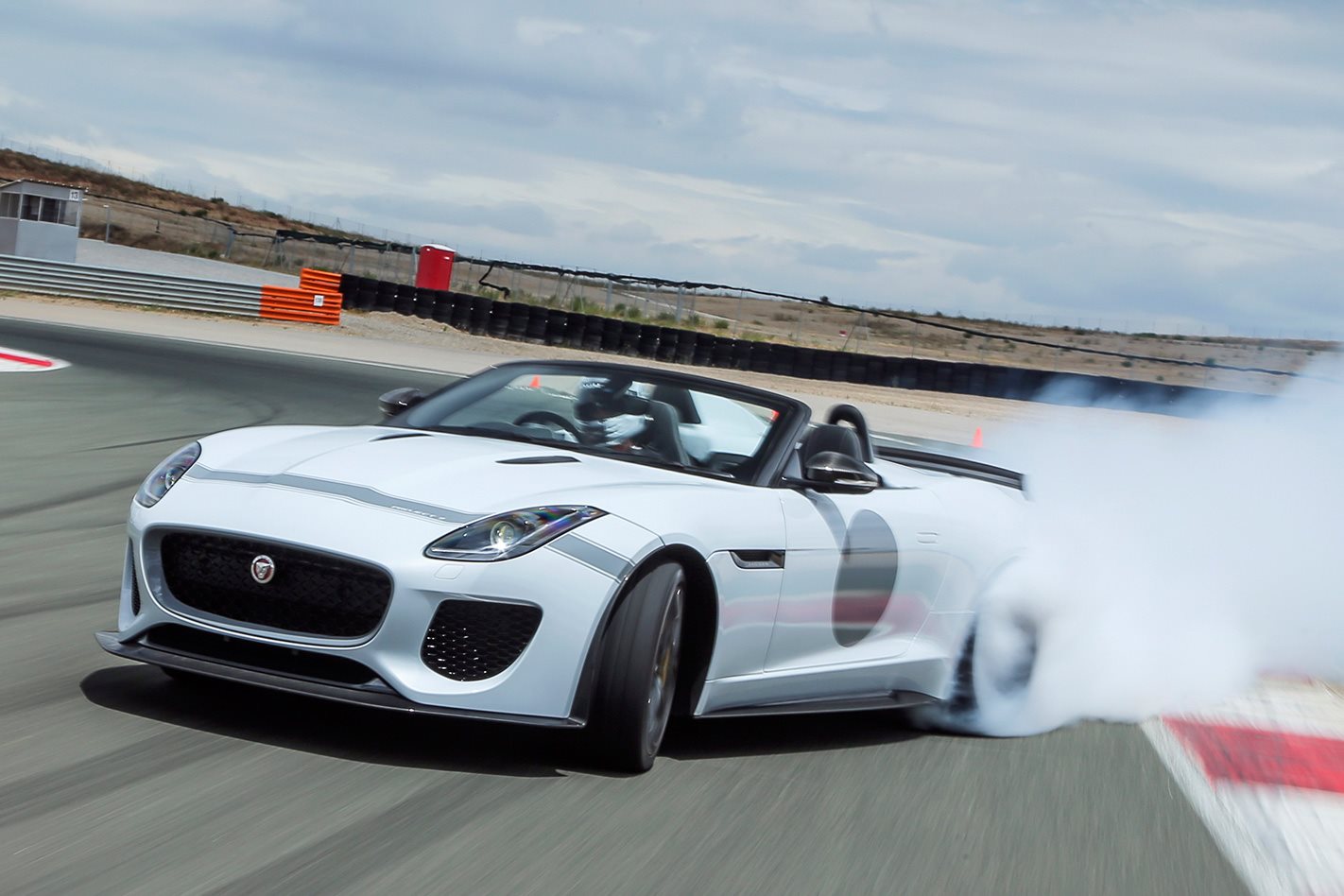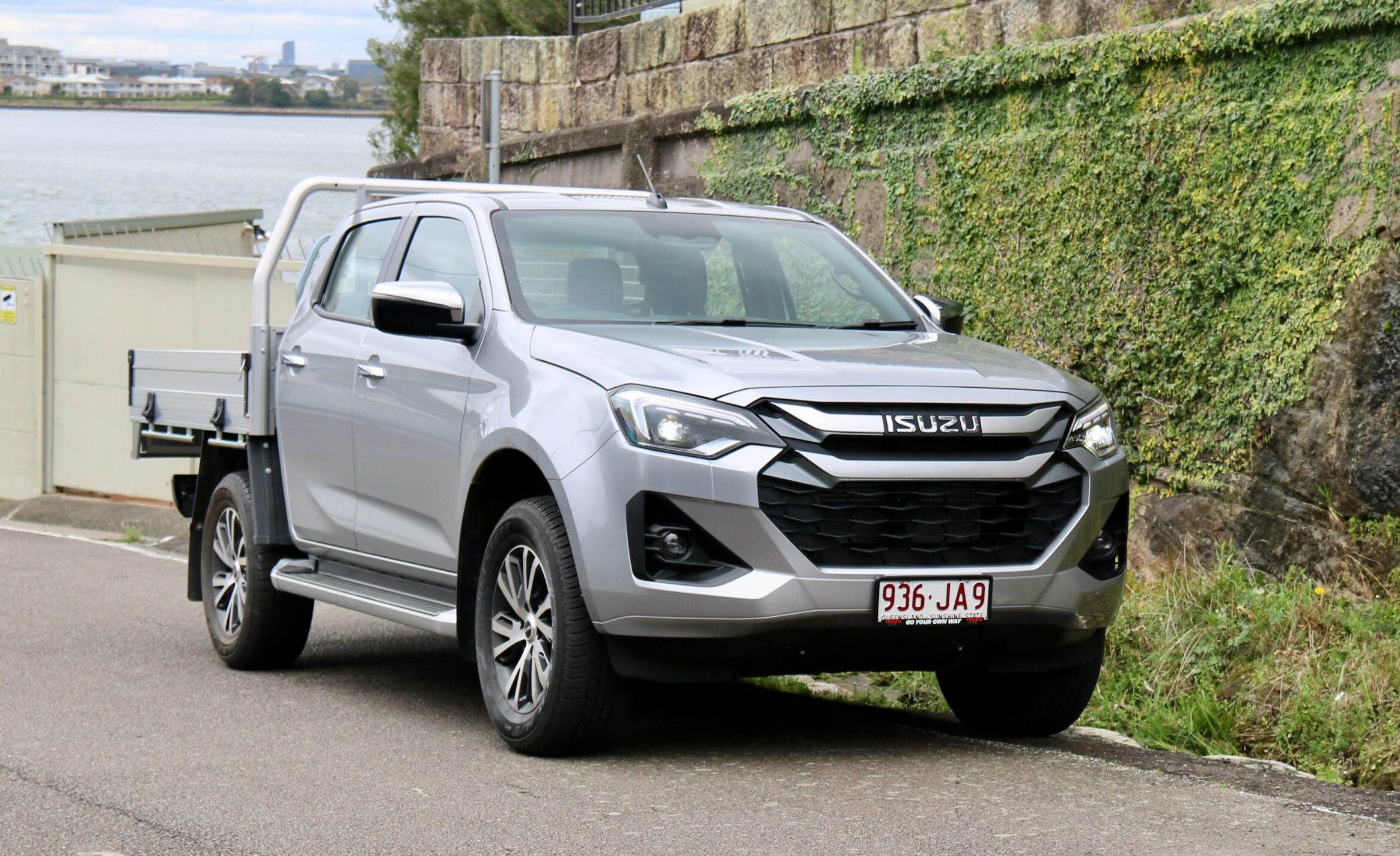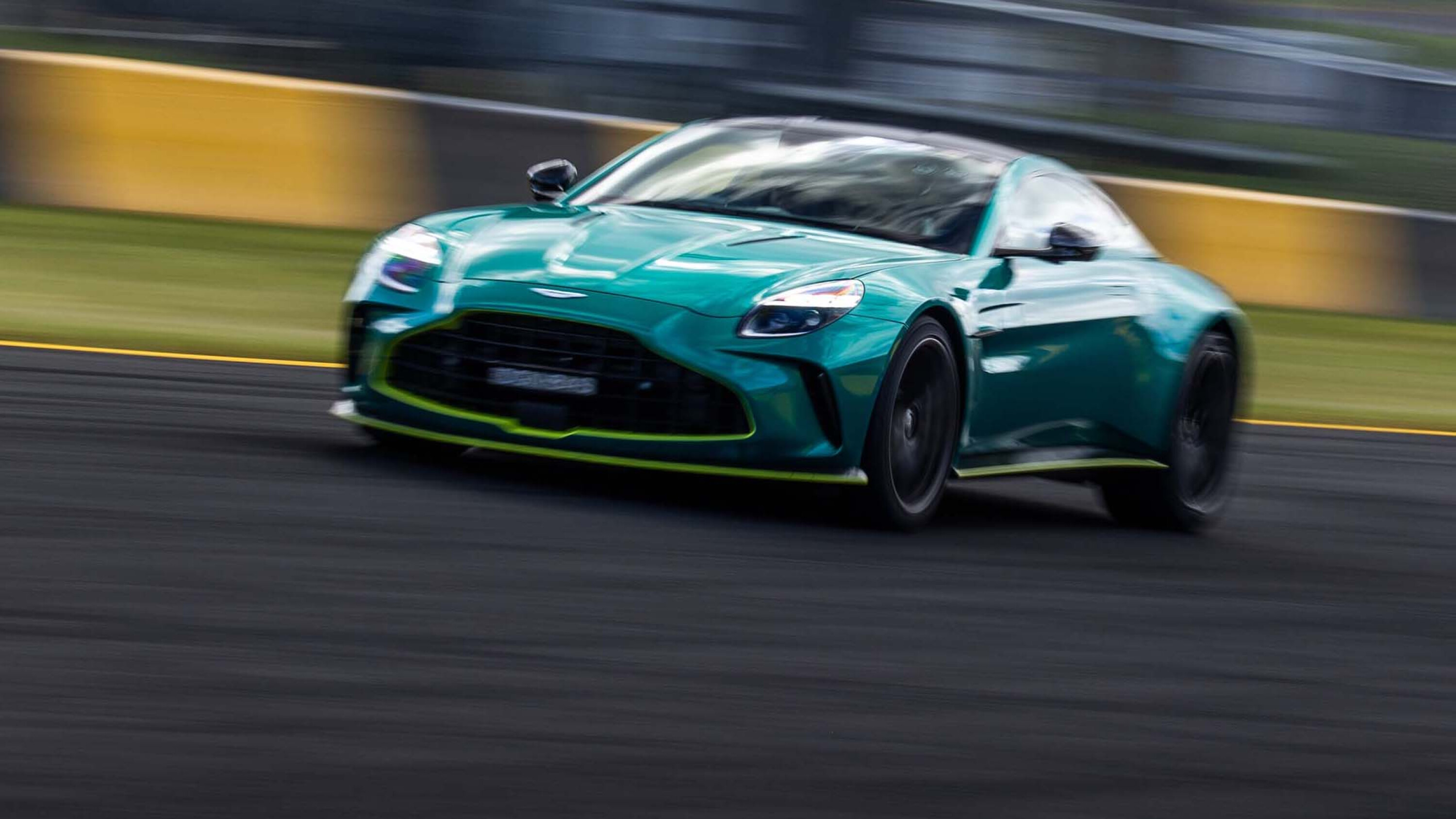We’re doing over 200km/h in the new Jaguar F-Type Project 7 on the short main straight of the Navarra circuit in Pamplona, Spain. I’m not sure of the exact speed because there’s a threatening right-hander ahead and this isn’t the moment to start scanning speedos.
The wind is tearing at the top of my head, but the airflow around my bonce feels curiously orderly. My passenger, on the other hand, is hunkered down in his seat because for him a tornado is blowing.
The difference between our comfort levels is down to the single, D-Type-style aerodynamic hump behind my head. The words of the company’s Special Vehicle Operations boss, Paul Newsome, delivered earlier, suddenly come back to me. “Project 7 is a bit of a selfish choice,” he said.
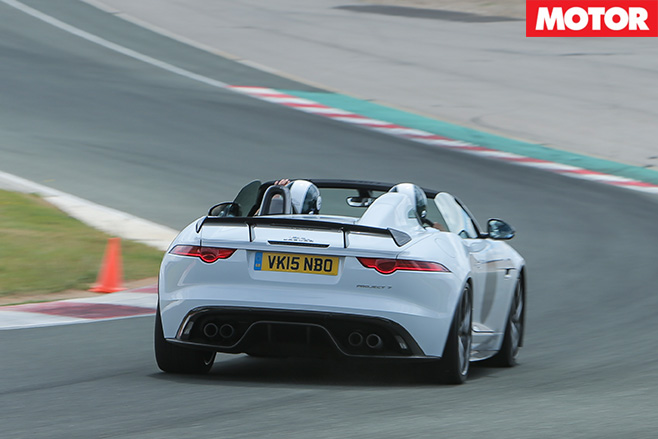
That initial concept has evolved into the car we’re driving today: the Project 7. It’s the most powerful road Jaguar yet, hand-built at the company’s Special Vehicle Operations division and fitted with all the top-end running gear: a specially tuned ZF eight-speed auto, electronic diff, carbon-ceramic brakes, unique-tune adaptive dampers and Jag-specific settings for engine management and chassis stability control.
The Project 7 also has unique springs and anti-roll bars, the most prominent feature being front springs that are a whopping 80 per cent stiffer, to cope with the potential force generated by the brakes and withstand high speed turn-in loads on the soft standard Continental Force tyres. Engineers also moved the Sport and standard suspension settings further apart, to provide good options for short and long-distance use.
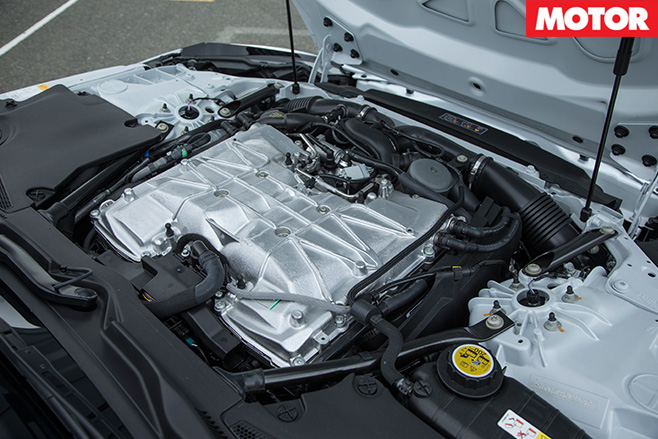
Throw in the effect of a 45kg weight reduction (the ‘roof’ saves 35kg and the seats have race-bred carbonfibre shells) and you get best-yet F-Type straight-line acceleration: 0-100km/h in 3.9sec. The top speed is electronically limited to 300km/h, as with other F-Types.
With the exhaust butterflies open (there’s a special console switch), the car emits a superb bark that turns into a magnificent crackle on the over-run. It’s the one thing that makes you want to slow down.
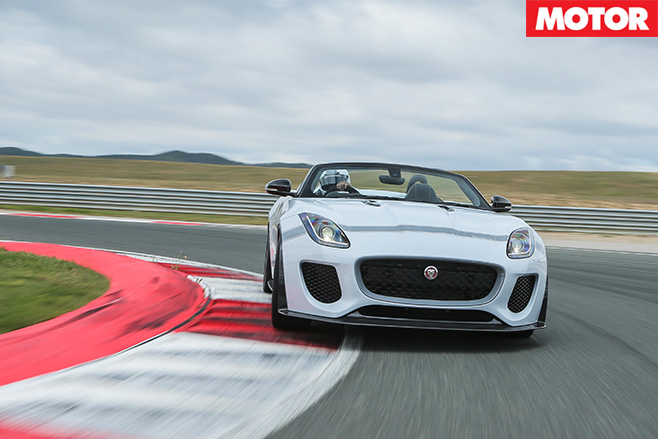
“We increased front negative camber from 0.5 to 1.5deg, to encourage the front wheels to dig in, and we used rear torque vectoring – differential braking of the rear wheels – to make the car turn easily. It’s surprising how much yaw you can achieve with relatively little braking, although the challenge is to make it feel natural.”
SVO engineers also rebalanced the car’s rear-biased aerodynamic downforce by fitting side skirts and a large front splitter, while slightly reducing the effectiveness (and drag) of the boot-lid wing. “You should find the car’s quite a lot more agile than other F-Types,” Newsome said. “The mods we made are most obvious on track.”
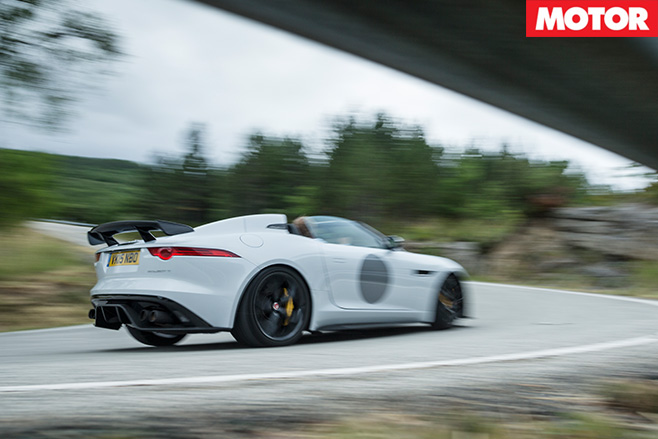
You feel the extra stiffness of the front end within the first 100 metres, along with the almost complete lack of body roll that comes with it. We couldn’t find any Oz-style bumps, but it’s likely the Project 7 is going to feel uncomfortable over such terrain.
On a better note, always present is the powerful initial bite and supreme high-speed retardation of the brakes. The steering feels firmer and a few per cent more communicative than an ordinary F-Type’s, especially when the car is turning. The gearchanges are also very quick, even if you leave the gearbox to its own devices. Bottom line: nothing about the Project 7 changes has harmed the F-Type’s endemic ease of driving.
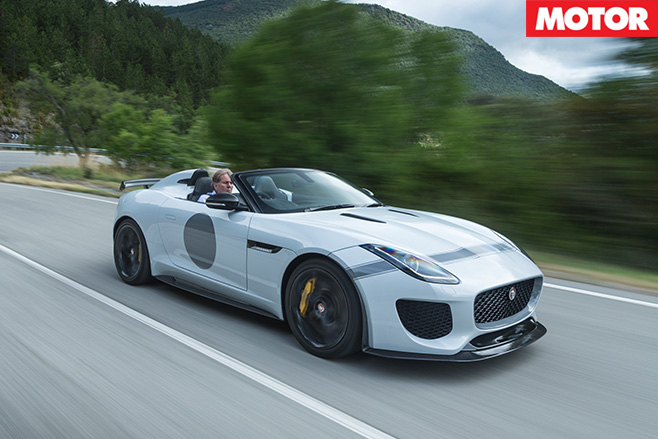
As Newsome promised, the car’s party trick is its supreme stability and grip when plunging at 210km/h-plus into braking areas for 80km/h bends, followed by an almost uncanny ability, for a big car, to turn neatly and fast up against the limit.
That’s the Project 7. Extra agility was promised, extra agility was delivered and a lot more driver improvements came along for the ride.
4 out of 5 stars
Specs Engine: 5000cc, DOHC, supercharged V8 Power: 423kW @ 6500rpm Torque: 680Nm @ 3500rpm Weight: 1585kg 0-100km/h: 3.9sec (claimed) Price: $339,610

